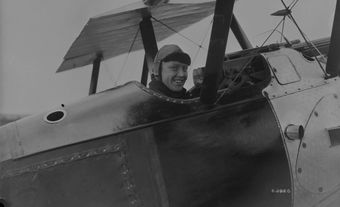Kazuo Nakamura, painter (born 13 October 1926 in Vancouver, BC; died 9 April 2002 in Toronto, ON). A founding member of the Painters Eleven and a member of the Royal Canadian Academy of Arts, Nakamura produced abstract paintings that were distinctive among Canadian artists of his generation in part because of their formal simplicity and rigour.
Early Life and Career
Nakamura was among the Japanese Canadians interned during the Second World War (Tashme, BC, 1942–44). After studying at Toronto's Central Technical School (1948–51), he became a member of Painters Eleven. In the 1950s and 1960s his paintings were of four distinct types: dark, vaguely surreal block structures in stark environments evoking the prairies; muted landscapes with a gentle broken touch; off-white abstractions painted over spare, linear configurations of string laid down on canvas; and linear abstractions in an indeterminate space. All had a simpler structure and coloration (mostly monochrome) than the work of other members of Painters Eleven.
Style and Themes
Influenced by Jock Macdonald’s interest in Hungarian painter and photographer (and teacher at the Bauhaus art school in Germany in the 1920s and early 1930s) László Moholy-Nagy and his own reading in science journals, Nakamura was often concerned with science, time and space. As is evident in his “inner structure” paintings of the 1950s, Nakamura described himself as seeking a "fundamental universal pattern in all art and nature." Later, in the 1970s and 1980s, he increasingly emphasized grid paintings based on number structures, which came to involve the Pascal triangle, an array of number relationships associated with triangles studied by 17th-century French philosopher and mathematician Blaise Pascal. To Nakamura, these laboriously inscribed works were a quest for some ultimate order in the apparent chaos of the universe.

 Share on Facebook
Share on Facebook Share on X
Share on X Share by Email
Share by Email Share on Google Classroom
Share on Google Classroom


